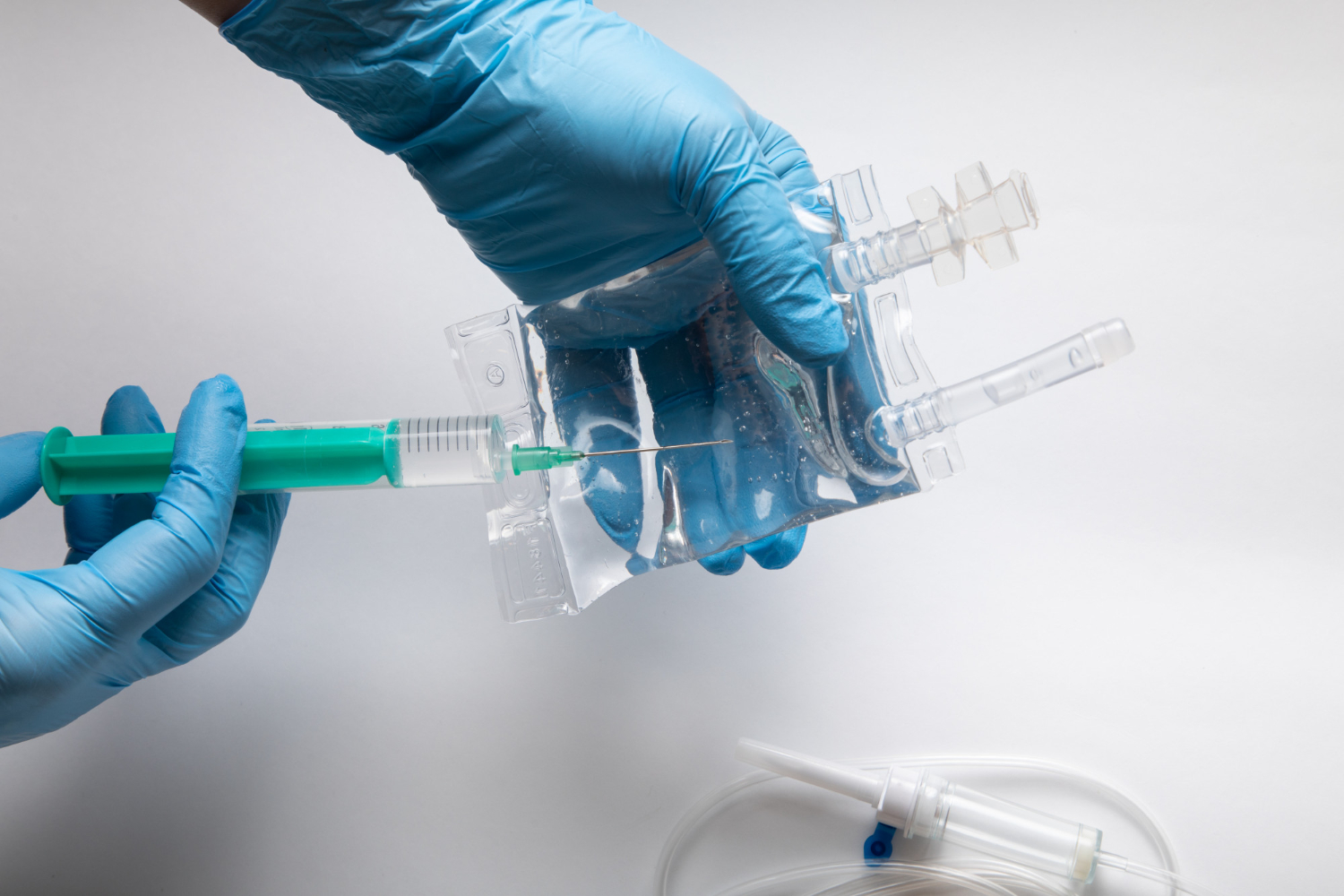Ensuring Proper Nutrition with In-Home Tube Feeding

If you are helping a loved one stay healthy at home after an illness or surgery, you may have come across the term Tube Feeding. It might sound intimidating at first, but it is simply a safe and effective way to deliver nutrition directly to the stomach or intestines when eating by mouth is not possible. Whether it is for an aging parent, a family member with a chronic illness, or yourself during recovery, Enteral Nutrition can make all the difference in maintaining strength and overall well-being.
With AktRapid’s Home Care Services, you can receive professional Feeding Tube Help from trained nurses and caregivers who bring hospital-level support right to your doorstep anywhere in Australia.
What Is Tube Feeding?
Think of Tube Feeding as a direct pipeline for nutrition. Instead of chewing and swallowing, a tube delivers liquid food directly into the digestive system. This food, called Enteral Nutrition, contains the essential nutrients your body needs—proteins, fats, carbohydrates, vitamins, and minerals. It is like receiving a perfectly balanced meal in liquid form, measured to meet your specific health needs.
There are several types of feeding tubes, including:
- Nasogastric Tube (NG Tube): Inserted through the nose into the stomach, often used for short-term feeding.
- Gastrostomy Tube (G-Tube): Placed directly into the stomach through the abdomen for long-term feeding.
- Jejunostomy Tube (J-Tube): Inserted into the small intestine for those who cannot tolerate stomach feeding.
The method and type of tube depend on your medical condition, nutritional goals, and how long you will need the support.
Why Tube Feeding Might Be Needed
Tube Feeding is often prescribed for individuals who cannot consume enough nutrients through regular meals. Common reasons include:
- Difficulty swallowing due to stroke, neurological disorders, or throat surgery
- Recovery from major surgery, especially after gastrointestinal or head and neck procedures
- Chronic conditions such as cancer, multiple sclerosis, or advanced Parkinson’s disease
- Severe weight loss or malnutrition caused by illness
If a doctor recommends Tube Feeding, it is not a setback. It is a proactive step toward healing and maintaining energy levels. Think of it as giving your body a reliable fuel source, just like topping up your car’s tank before a long drive.

How Tube Feeding Works at Home
Bringing Tube Feeding into your home does not mean you are on your own. With the right training and support, it can become part of your daily routine—just like preparing meals or taking medications. AktRapid provides Home Care Services designed to make this process smooth, safe, and stress-free.
Here is what to expect with in-home Tube Feeding:
- Professional setup: A nurse from AktRapid will set up the equipment, check tube placement, and confirm your feeding plan.
- Education and guidance: You and your family will be taught how to operate the feeding pump, clean the tube, and manage the formula.
- Scheduled feeding times: Depending on your needs, feedings may be continuous (using a pump) or intermittent (using a syringe or gravity bag).
- Regular monitoring: Caregivers will track weight, hydration, and tolerance to the formula to make sure you are receiving proper nutrition.
It might seem like a lot to learn, but most families adjust quickly. Once you have done it a few times, it becomes as natural as making a cup of tea.
Benefits of Tube Feeding at Home
Home-based Tube Feeding offers comfort and convenience that hospitals simply cannot match. Here are some benefits you or your loved one may notice:
- Comfort and familiarity: Staying in your own home promotes emotional well-being and helps recovery feel less clinical.
- Personalised care: Feeding plans can be tailored to match your nutritional and medical needs.
- Reduced hospital visits: With trained professionals managing the process, you can avoid unnecessary trips to clinics.
- Independence and dignity: You can stay involved in your own care and maintain your daily routine.
- Support for family members: Caregivers receive guidance and relief, knowing professional help is available anytime.
AktRapid’s nurses understand that feeding through a tube is not just about calories—it is about maintaining health, comfort, and confidence every single day.
Common Concerns About Tube Feeding
It is natural to have questions or even worries about Tube Feeding. Here are a few common concerns, along with straightforward answers:
1. Will it be painful?
No. The insertion might cause mild discomfort at first, but it usually eases quickly. The feeding itself should not hurt.
2. Can I still move around?
Yes. Once the tube is secured and you are comfortable, you can walk, sit, and carry on with most daily activities.
3. What about hygiene?
Cleanliness is very important. With AktRapid’s guidance, you will learn how to clean the site and handle equipment safely to avoid infections.
4. Will I feel full or bloated?
Sometimes at the beginning, yes—but this usually settles once your body adjusts to the feeding rate and formula.
5. Can I still taste food?
If your doctor allows, small sips or bites might still be possible. Some people even enjoy tasting their favorite meals occasionally for comfort.
Remember, there are no silly questions when it comes to your health. The AktRapid team encourages open communication so that every concern is addressed with care.
Your Role as a Family Member or Caregiver
If you are supporting a loved one on Tube Feeding, your role is more important than you might realize. You are the bridge between comfort and care. By working closely with AktRapid’s care team, you can help monitor nutrition, check for signs of discomfort, and offer emotional reassurance.
Here are a few simple but powerful things you can do:
- Keep a feeding journal to record times, amounts, and any side effects.
- Make sure equipment is cleaned after each use.
- Stay alert for redness, leakage, or pain around the tube site.
- Encourage your loved one to stay positive and engaged.
You do not have to be a medical professional to make a big difference—just someone willing to learn and lend a helping hand.
Working with AktRapid for Tube Feeding Support
When you choose AktRapid, you gain access to experienced nurses and caregivers who bring clinical expertise and compassion right into your home. Their Home Care Services are designed to help Australians manage medical needs comfortably and confidently.
Their team can help with:
- Starting or maintaining a Tube Feeding routine
- Troubleshooting equipment or formula issues
- Coordinating with your doctor or dietitian
- Monitoring for signs of infection or dehydration
- Offering emotional and practical support for both clients and families
If you would like to learn more about their range of in-home care options, visit their Employer Home Care page.
Practical Tips for Successful Tube Feeding at Home
Here are a few time-tested tips to keep your feeding routine on track:
- Wash your hands before handling any equipment or formula.
- Check the formula’s temperature—room temperature is best.
- Flush the tube with warm water before and after feeding to prevent blockages.
- Store supplies properly in a clean, dry area.
- Replace tubing and syringes as recommended to avoid contamination.
- Stay hydrated. Even if you are getting nutrition through a tube, water intake is still important.
- Be patient with yourself. Like learning to drive, it takes a few tries to feel comfortable.
Little habits can make a big difference. Before long, Tube Feeding will feel like a normal part of your daily care routine.
Maintaining Emotional Well-being During Tube Feeding
Adjusting to Tube Feeding can be emotional—for both the person receiving it and their family. It can bring feelings of frustration or self-consciousness at first. But remember, needing a feeding tube does not change who you are. It is simply another way to stay nourished and strong.
Here are a few gentle reminders:
- Keep social connections alive—chat with friends, share meals at the table, and stay part of family life.
- Celebrate small victories—like finishing a full feeding without discomfort.
- Ask for help when needed. Even the most capable people need support sometimes.
AktRapid’s caregivers are not just medical professionals; they are compassionate companions who understand that healing involves both body and spirit.

The Future of In-Home Tube Feeding in Australia
With advances in Enteral Nutrition and better access to Home Care Services, Australians now have more options than ever to stay at home while receiving medical nutrition safely. Tube Feeding is no longer limited to hospitals—it is a practical and effective solution for those who want to maintain independence without compromising health.
As healthcare moves toward more home-based models, AktRapid continues to lead with professional, patient-focused care that meets every individual where they are most comfortable—at home.
Ready to Begin In-Home Tube Feeding with Professional Support?
Proper nutrition is a cornerstone of recovery and long-term health. Whether you are managing a chronic illness, helping a loved one recover from surgery, or supporting an aging parent, Tube Feeding at home can provide comfort, convenience, and peace of mind.
With AktRapid, you gain a trusted partner dedicated to safe and professional care in the comfort of your home.
Reach out today to learn how AktRapid’s Home Care Services can support your Enteral Nutrition needs. Visit https://www.aktrapid.com.au/employer-home-care to get started.